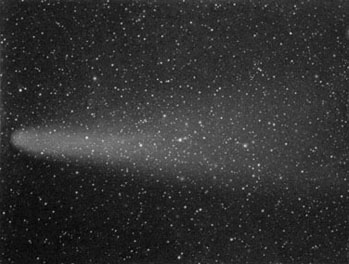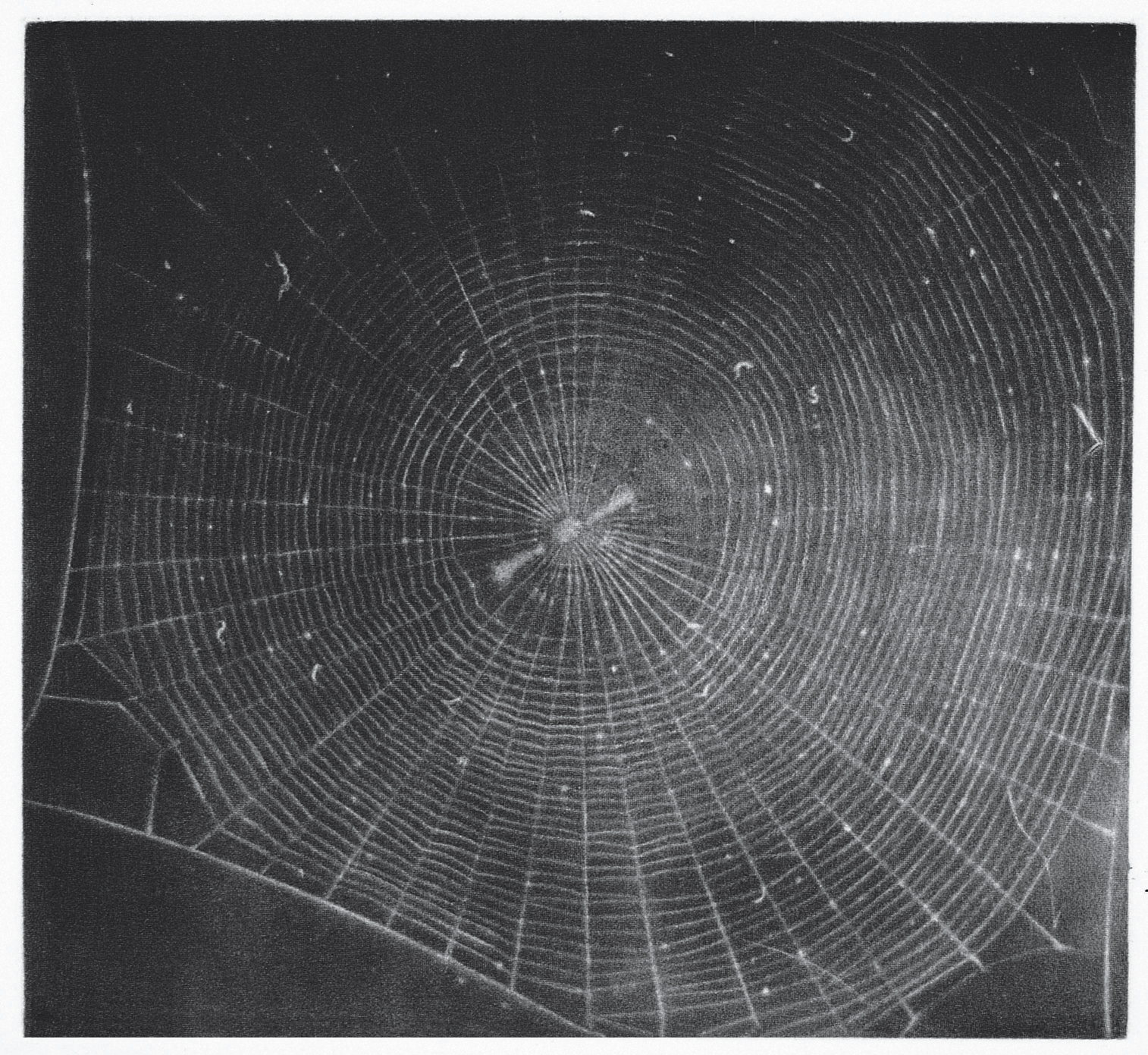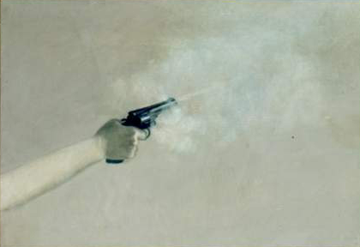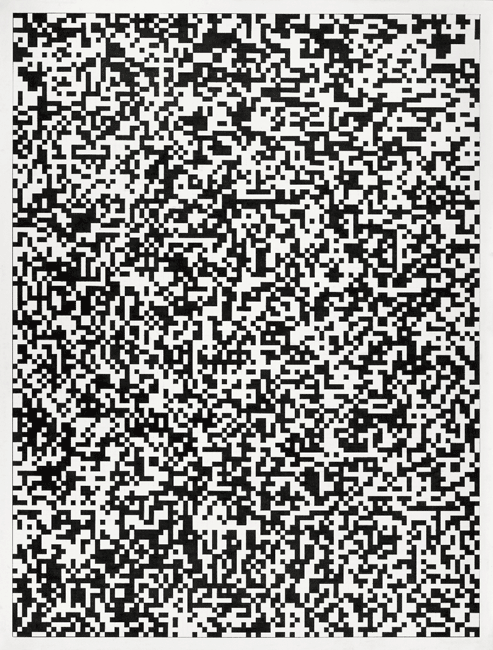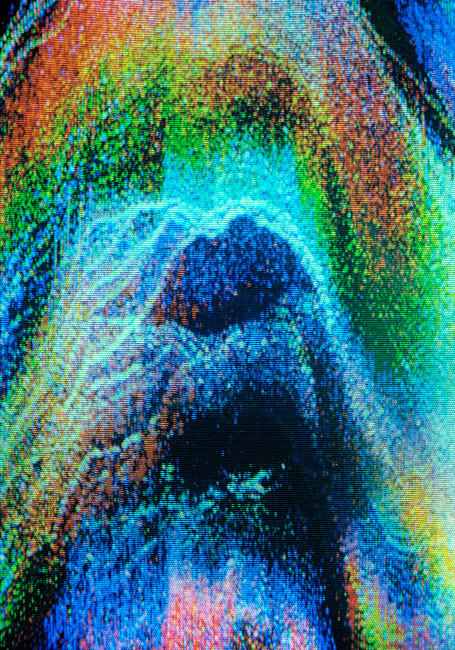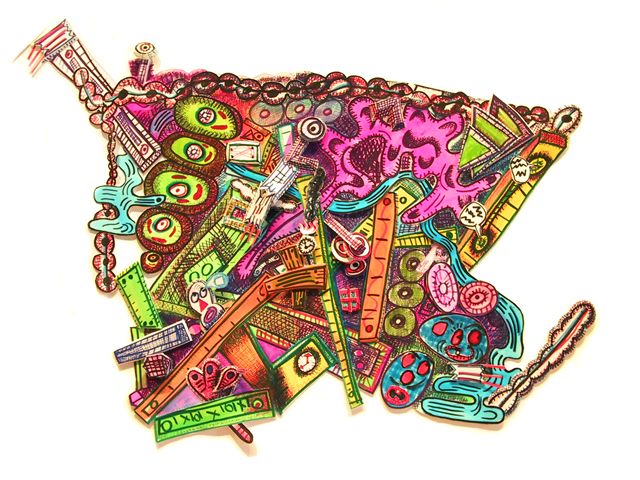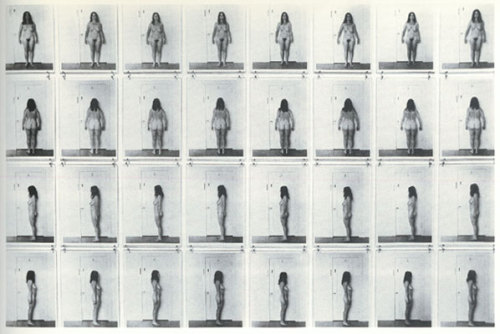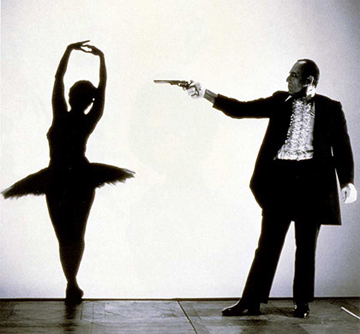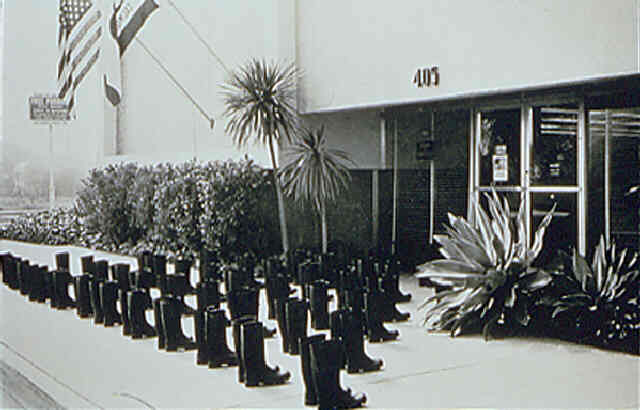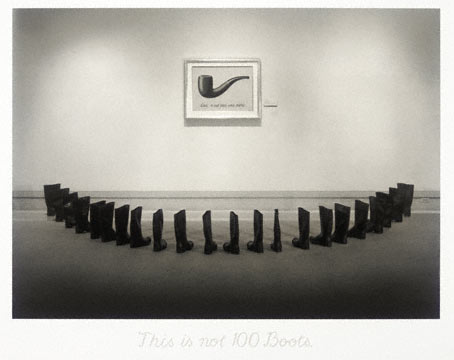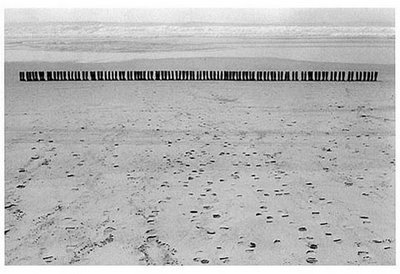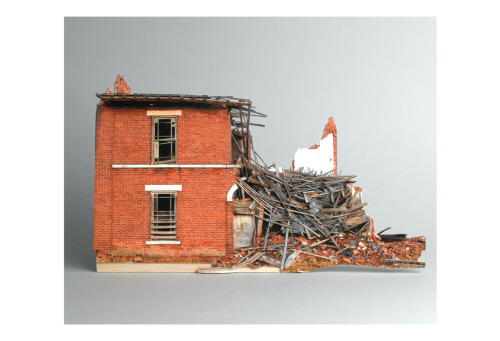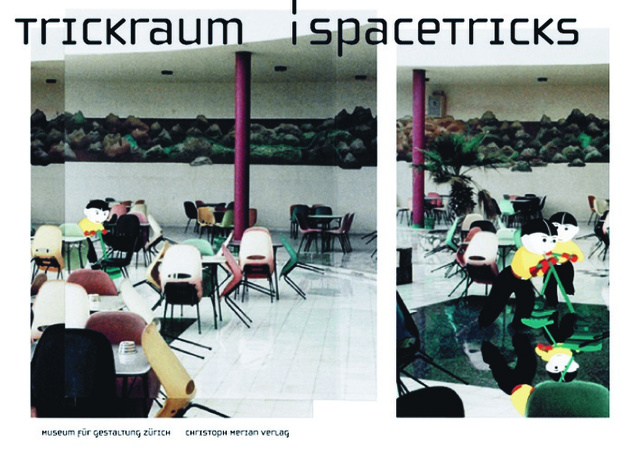George Alexander - 1990 something.
As our front wheels shimmy over the edge of the century, with the mileage indicator approaching triple zeros, there’s going to be a huge market for the Near Future. New Cities, new amphetamines, new torpedoes, new kinds of laughter and immuno-deficiencies. Anchor-persons and magazine pundits have been getting some practice on what the 1990’s hold in store. They say it’s going to be Eighties Retro! So has the future run out of ideas? Or just run out of time?
We’ve got so breathlessly forward-looking that the most gripping items are the ones just out of date. The future is Just Then; the recent past is a slightly dated future. Postmodern time is so metaphysically elastic, and the feedback loops have gotten so tight, we now have a great future behind us.
A decade is, of course, an arbitrary concept. We all know history doesn’t put its arm out to indicate a lane-change every ten years. That’s being hypnotized by numbers. And yet like the Zodiac signs they seem to be creating real life types. You read up on the character analysis and behave accordingly. The 1960’s now are peace, love, and mung beans; the 1980’s, flag, family and junk bonds. The Yippies became Yuppies (c.f. Jerry Rubin). Paradise Now, the Bottom Line tomorrow.
That everything is typical, Peter Schjeldahl remarked, is a well-known bummer. Or to quote Jessica Rabbit: “I’m not bad, I’m just drawn that way.” As an anodyne to that kind of thinking, try and reconcile in your mind to 1980s events; the airborne TV coverage of the funeral of the Ayatollah Khomeini and the auction of the Warhol collection.
Looking over a House Mix of the 1980s items, and cutting them like records out of milk crates, here is just one week’s agenda: Remo’s 1989 Gift Guide arriving in the mail at the same time as the design book of the Deus Ex Machina group. Meanwhile, inside the electronic cocoon, network TV offers a ticklish choice of channels at 10:30 pm every Thursday night between Max Headroom and thirtysomething. (You’ve heard this before, but may need a reminder: Those who don’t study T.V will be doomed to repeat it). What’s impressive is the speed with which they can hot-wire our psychographics. Picture us caught between the anxious struggle to gain memory of humanness and the anxious struggle to maintain payments on the Miele dishwasher. (Benetton , the Italian clothing store, has target marketing down pat. It has 6000 or so outlets. Computer analysis of sales information reveals a favourite colour of the week and dyes 15% of all clothes on the basis of that information.)
In terms of ratings we’re talking around the 54% of the AB socio-economic quintile: over 2 million viewers, a big constituency of service elites into PR, Law, data, and finance – in terms of social composition, a WASpy, preppy look of aspiration, exchanging business cards and power lunch dates, shaping into a patrician style with two columns in interview magazine. The couple (whether yuppie, guppie or buppie) becomes the sole refuge possible against solitude (a newer, more numbing kind of alienation) and against power. In the 1980’s we protect ourselves, insulate, demarcate a private and domestic space over-determined with my things: my partner, my desktop, my superannuation. On the other side: the world, the public, politics.
Thirtysomething exploits its lower-case intimacy like a toddler does dimples. It’s Bergman by way of fractured Beatrix Potter stories when Mr and Mrs Mouse (Michael and Hope) visit Mrs Hedgehog (Nancy) and ex-Mr Hedgehog (Elliot). The rest of the Philadelphian ratpack is made up of singles (Melissa, Gary and Ellen) who watch Public Broadcasting documentaries while eating Lean Cuisine and sit at their laptops writing covering letters to the National Endowment of the Arts. Shot like a New Woman commercial, it’s a soft focus study of the serpents that lurk in every Ikea kitchen. Every sigh is a sign, every knit brow will fax something across the room. You can imagine psycho-therapists in marriage enrichment groups replaying scenarios to troubled couples for guidance.
Hope and Michael are the poles around which the ensemble orbits. Michael exhaustingly self-involved, prods pet phobias and is always looking wall-eyed at his past – a little to the right where he used to be in the 1960s on politics (now media advice to Neocon artists), poetry(now advertising copy) and ideals (now budgetry short falls). His biggest fear is proletarianisation, a sliding reverse yuppiedom.
But where there’s Hope there’s hope. She exudes quiet WASP confidence that’s a mix of long happy childhoods and large trust funds. While everyone else buzzes with neuroses, she is the show’s optimism. Her birthright money, rank, brains and blueblood hormones build up anti-bodies fighting off despair and distrust. Being white, beautiful and straight is like psychic inheritanceheld in trust to tide you over the overdrawn years of fiftysomething.
At its best, as middlebrow entertainment, thirtysomething conveys the bluesy middle period between desire and withdrawal, those bitter—sweet efforts of people to connect, make sense, endure. At its worst and whiningest, it’s a matinee treat for the misanthrope turned forty, making intimacy just another commodity.
So EastEnders it ain’t. But the show reveals a telling equation for the 1960’s-1980’s misalliance. Counter-Culture + Moral Majority (over-mortgaged backed securities) = the Neoconservative Liberation Front minus the New Radical Middle.
Remo’s department store and Design Gallery, situated on Oxford Street at Crown in Sydney, faces the turn of the century in a turn-of –the-last-century building. A “lifestyle depot”, it extends MoMA’s museum shop to urban-centred, style-conscious Australians. The catalogue includes slinky toys, space pens, rolodex, and zero haliburton aluminum luggage. A mix of the one-off and the nostalgic, all products have “attitude”, the catalogue stating: “a Zeroll ice-cream scoop has soul, a cynical and inferior Taiwanese copy does not.” The Taiwanese might disagree. But the objects here create the subject. So no bath cubes, celebrity cookbooks, or crocheted coathangers here. No “I’m the Boss” mugs either.
Perhaps the most emblematic item for me was the solar-powered fan cooled pith helmut. Neocolonialism joins Soft Tech Greenie Consciousness to make a jokey hat.
The shop houses the fetishistic reliquaries of Design Fashion. Meanwhile the high art world, Laurie Parson’s battered suitcases and Robert Gober’s hand-made ready-mades go into the Museums. Shopping Art is big internationally, and products are drawn from security systems, wholesalers, air compressor services, all kinds of commercial and industrial hardware outlets.
Melbourne’s Deus Ex Machina group have a grander art-for-art’s sake motivation, but here Industrial Design Attitude is much more serious. It recalls Modernism’s over inverstment in the future just prior to that Big Ticket item, World War I. Some objects here are as beautiful as the chance meeting of a soda-syphon battle and a synthetic heart valve on a BMW Schnellbomber. Dominic Lowe’s Automatic Mace, which bristles with spike when disturbed, is a nice example. Lowe is drawn, he says, “to shapes found in pre-history, or on the deep sea floor, where bizarre life forms operate under crushing pressure and hellish blackness”. This wigged-out aesthetic is applied to fan heaters and standard lamps. “Why should flies,” write Robert Smithson, “be without art?”.
The book, beautifully designed, in Photo offset and laser scanned, is brilliantly generous of reference too, but seems indifferent as to whether the object is a sculpture by Kiefer or the Pillar of ice Spectacle by Albert Speer. On principle, it neglects to distinguish a telephone booth and a mobile nuclear power station except in terms of design. It allows you to edit your own list, and by the end of mine I was having nightmares that seemed to be stage-managed by the Brothers Quay. Set in electricity sub-stations I could hear the words of MIT’s Nicholas Negroponte in converstation with LL Cool J. it was about a Fun Palace designed by the Lockheed. I was gone Daddy-oh, real gone.
Forgive the Billy Joel, We-Didn’t-Start-the-Fire dynamics, but her’s another 1980’s retro list: Artificial Intelligence, Batman, Career Moves, Don’t-Worry-Be-Happy car stickers, Electrofunk, filofax, glasnost, hypertext, infotainment, J-curves, Koyabashi, Lean Cuisine, Metalhead, Networking, Optimum Health and Business Opportunity Entrepeneurs, Peacekeeper Missiles, Quality Time, Robotics, Satellite TV, Teleevangelism, the Unexpected, Videogenic, Workaholic Yuppy with a Zeroll ice-cream Scoop.
Or something you can dance to, this sub-lexicon: AIDS, Bald-headed men who cross-dress from the waist down, Club fallout, Dada, Evil, Fall-Down-Drunkabilly Music, Grace, Hopscotch on busy roads, Ironing with Irony, A Kinkier Genital Nation, Lovebites, Motorbike gangs, Noriega, Oriental Body painters, Psoriasis, Quirkiness, Rent, Studlust of Territorial SexHurt Domination, Toxic Dump Sites, Unsafe Culture and Underdog passion, Vinyl, Yearning, Zits.
And what’s more, five will get you ten that in the 1990’s
- · The USA and the USSR will get together and become the USSA.
- · Their ideology will be Hysterical Materialism.
- · Stockbrokers,a s part of their portfolio strategy, will read chicken entrails to call trends.
- · The 18th century croissant shop will open in your neighbourhood.
- · The poor will have lost all credibility.
- · That, yes, everyone will be fatuous for 15 minutes.
- · Your personality, like your jeans, will be preshrunk.
- · Semiotics will turn smiles into a “friendly contractions of the jaws”.
- · They’ll find a way to digitize the smell of your own farts.
- · Artificial Intelligence will be alternated with Real Stupidity.
- · The theory of mystification of the mass media will be more mystifying.
- · The most aggressive anti-yups(called Nopes) will become sitcom regulars.
- · That both McCarthyism and early 1970’s denim embroidery will enjoy a rerun.
- · You’ll have to have urine tests before going on Family Feud.
- · Trust will mean taking good care of someone’s money.
One things for sure, the next century won’t thank the last for leaving its legacy in a will it never acknowledged. The art of prediction will be put down by the technology of history.




